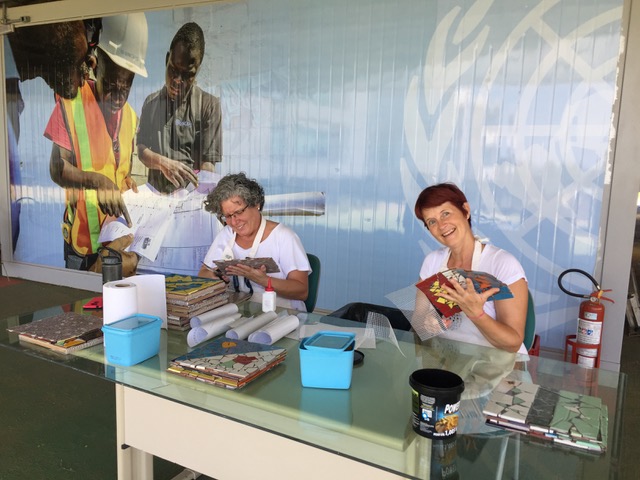As a celebration of friendship and collaboration the mosaic studios Cida Carvalho and Mosaic Moments of Gertrud Müller opened a mosaic exhibition of works from students and masters related to both studios at the visitors centre of the botanic garden in Brasilia. There couldn’t be a better venue for a mosaic exhibition – as inspiration of most works come from animals and plants and the materials of mosaics are in the end minerals retrieved from the soil of our planet.
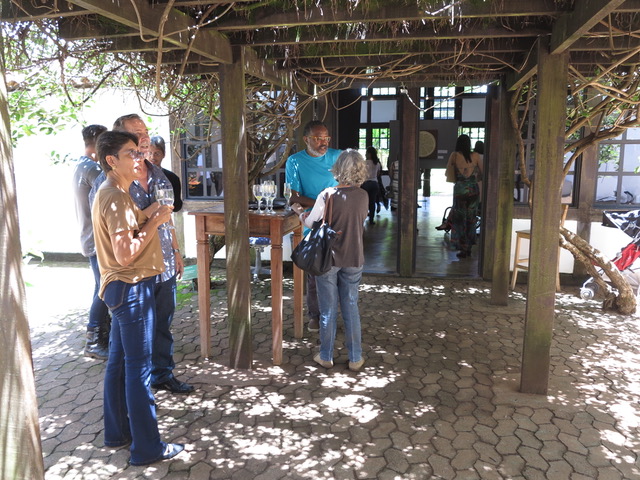
Photo Luca Bonacini
The exhibition will go on until December 2, featuring a bazaar of mosaic works on Dezember 1 between 10 – 17h at the visitors centre next to the cafeteria.
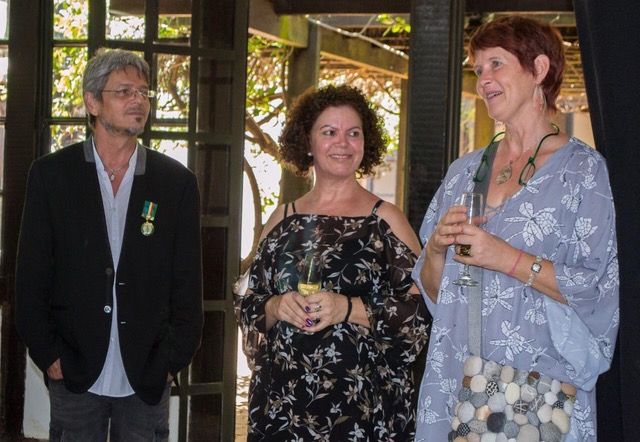
photo Aline Bastos
With the director of the Botanic Garden Jeanitto Gentilini, Cida Carvalho at the opening of the exhibition on Nov 14 at the visitors centre of the Botanic Garden Brasilia.
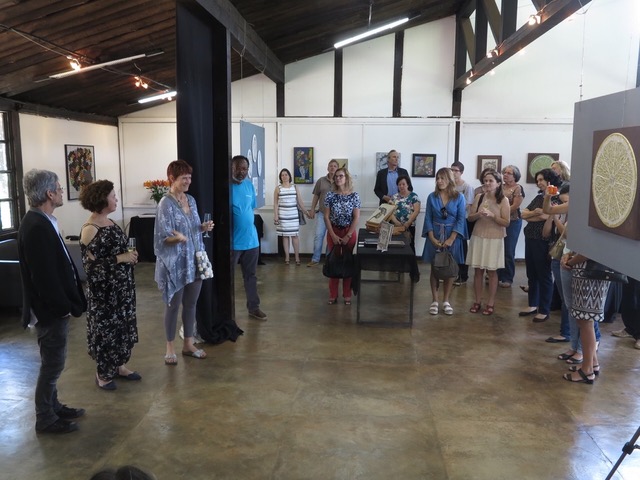
photo Luca Bonacini
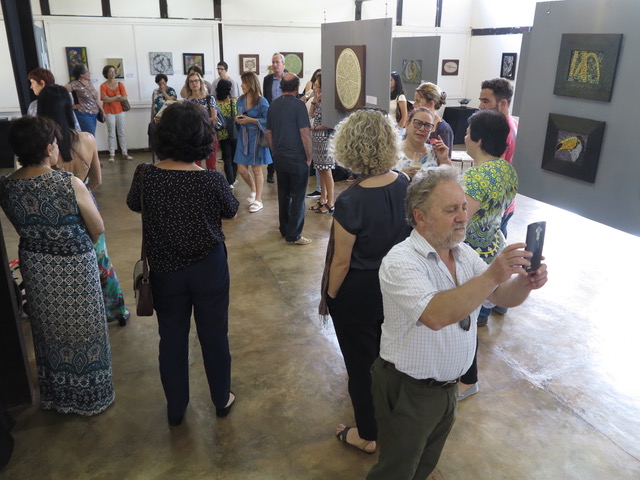
photo Luca Bonacini
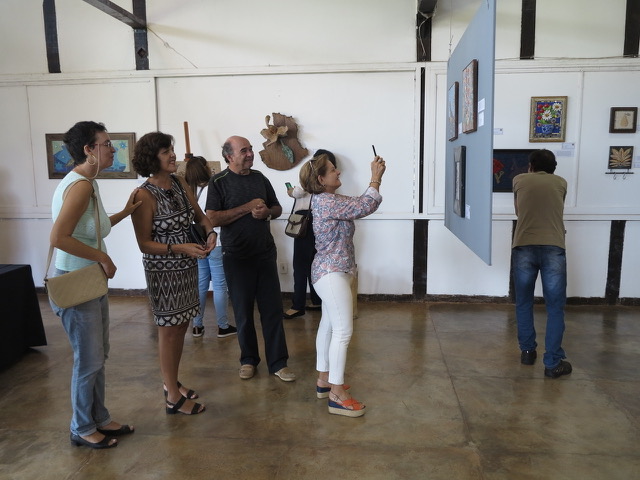
photo Luca Bonacini
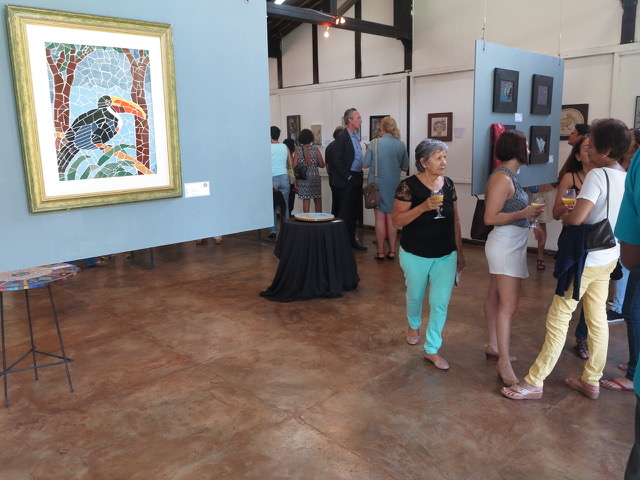
photo Luca Bonacini
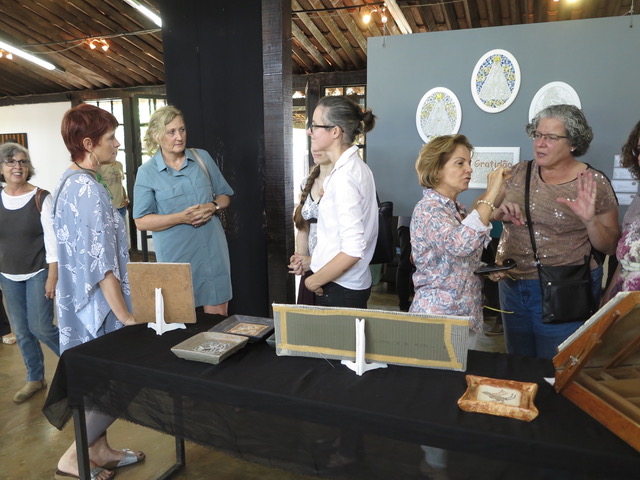
photo Luca Bonacini
With Silke, student of mosaic moments, Frau Boehm representative of the department of culture of the German Embassy in Brazil, Gracinda and Ligia both from mosaic moments.
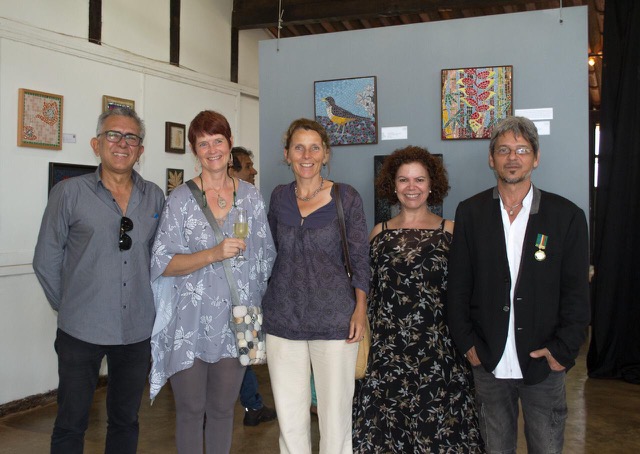
photo Aline Bastos
With Rosie Rangarajan invited mosaic artist from London currently living in Brasilia with her works in the back on the grey board and Cida and Jeanitto, director of the Botanic Garden.
I moved to Brasilia from Turkey in September 2015 fearing that nobody in Brazil would know about mosaic. But to my surprise googling mosaic studios in Brasilia the studio Cida Carvalho came up. I met with Cida in her studio in November 2015 getting to know her work and asking how to find a studio in Brasilia. She invited me to look at some empty rooms on the same floor of her studio in a commercial building in Asa Norte close to the city centre of Brasilia. On January 12 2016 I was moving into my first own studio 3 doors down from Cida.
It was the best move I could have done. Cida is an most amazing generous person. Her door is always open and there is usually fresh coffee! She has shared all her knowledge and contacts with me, helped with material search and finding contacts and sharing tools. We have learned from each other, me working with vitreous glass and ceramic tiles and she with natural stone. I can not be more grateful to her to make the last three years in establishing my own studio and mosaic school such a success!
The exhibition at the botanical garden is the best way to celebrate this success!
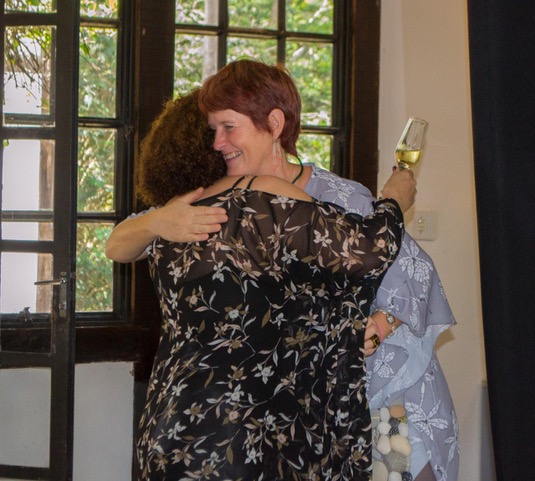
Photo Aline Bastos
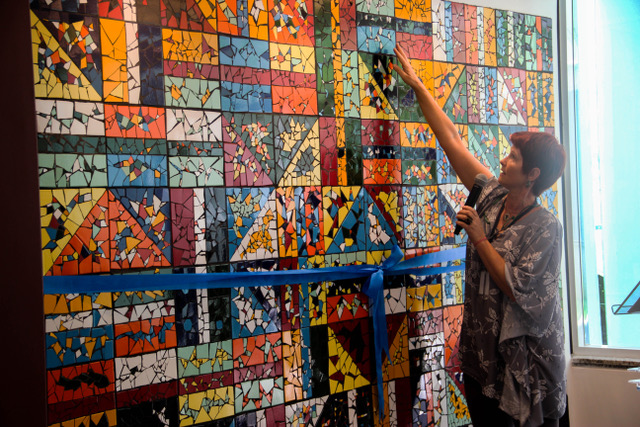
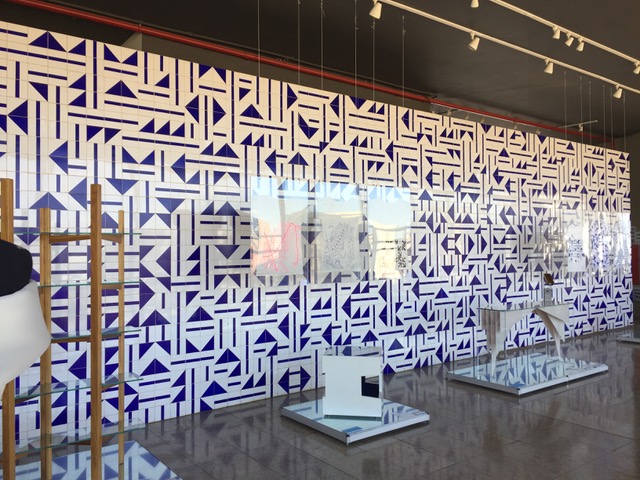 You can see the wall is created out of triangles and stripes. These are just two tile designs (see photo below) turned into different directions and so forming different patterns.
You can see the wall is created out of triangles and stripes. These are just two tile designs (see photo below) turned into different directions and so forming different patterns.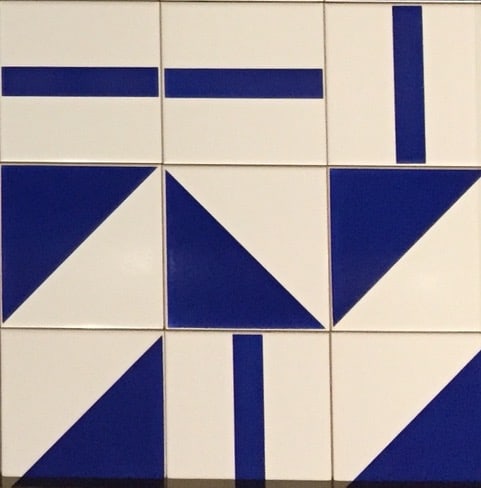
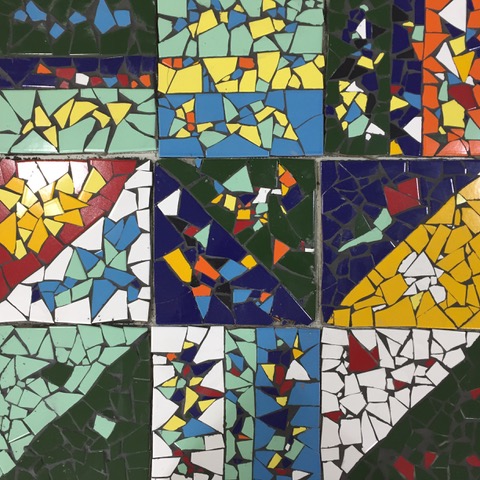
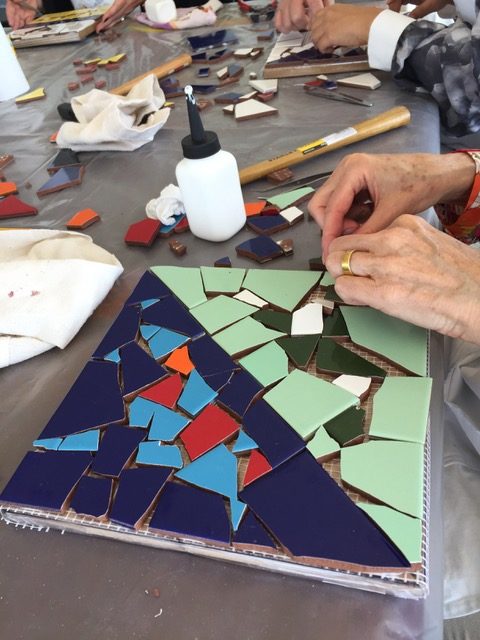
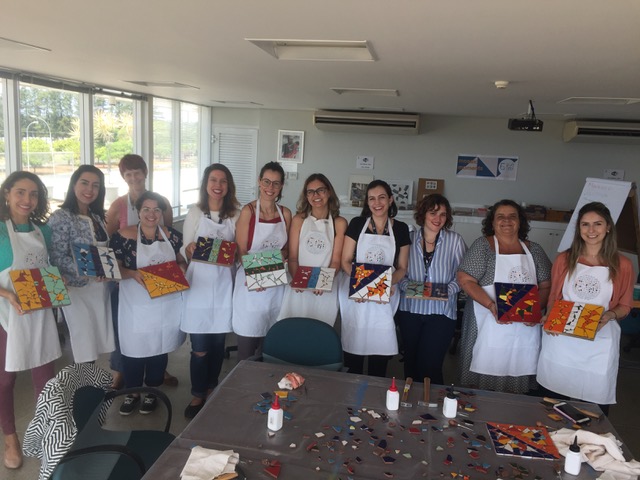
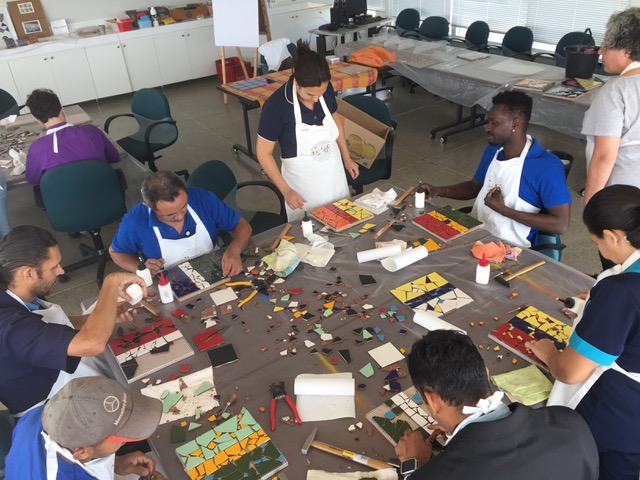
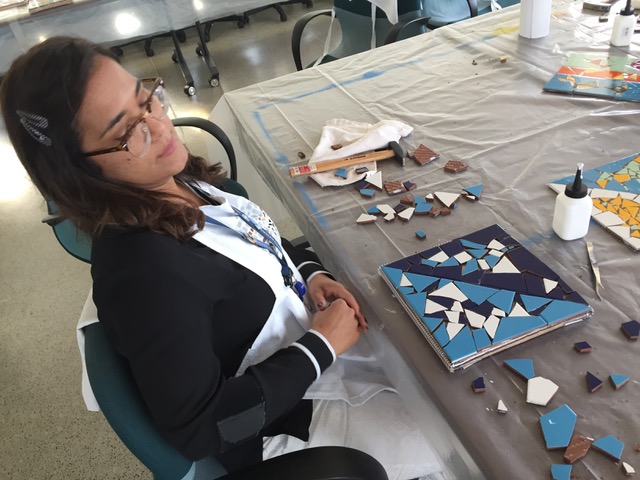
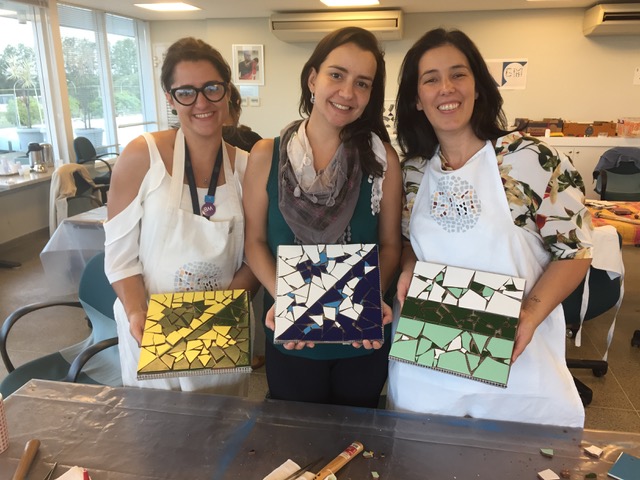
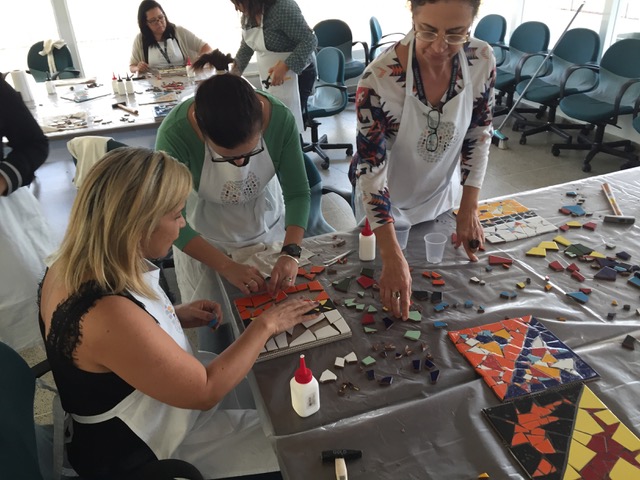
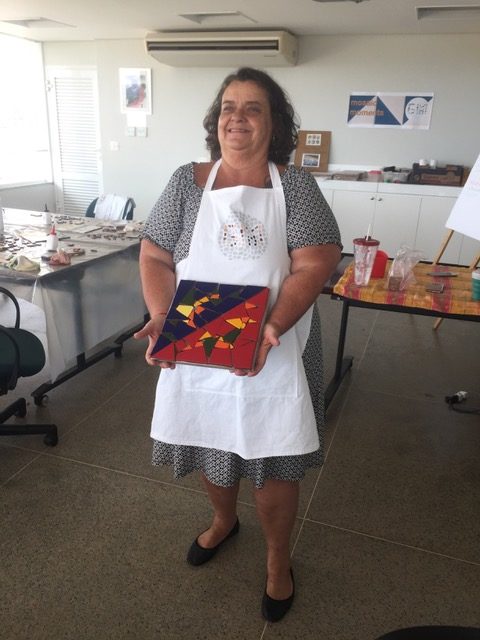
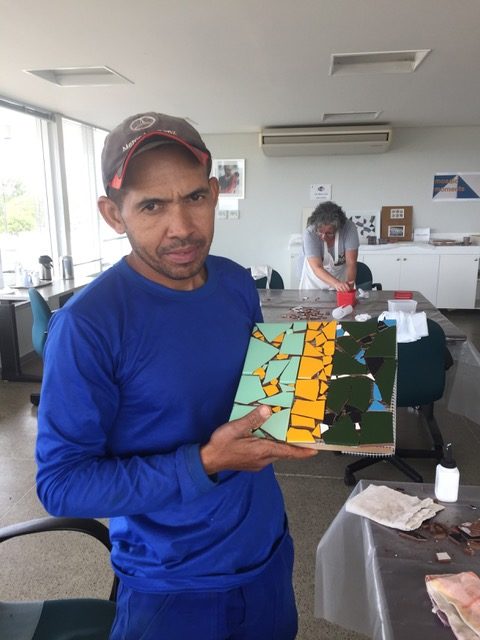
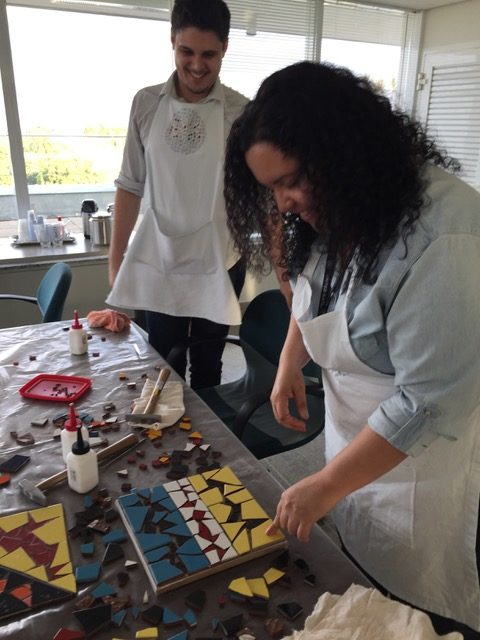
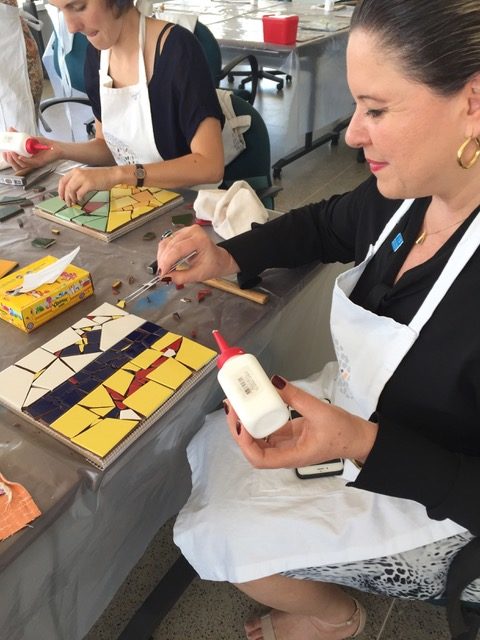
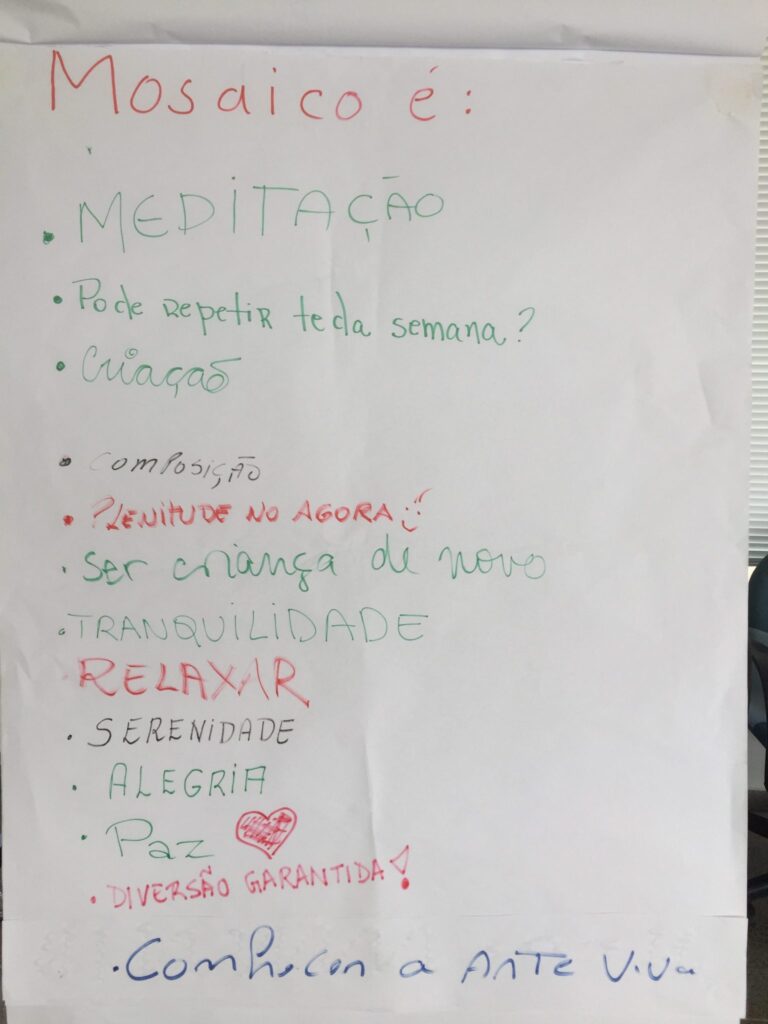 Participants reflected on their feelings during the workshop
Participants reflected on their feelings during the workshop